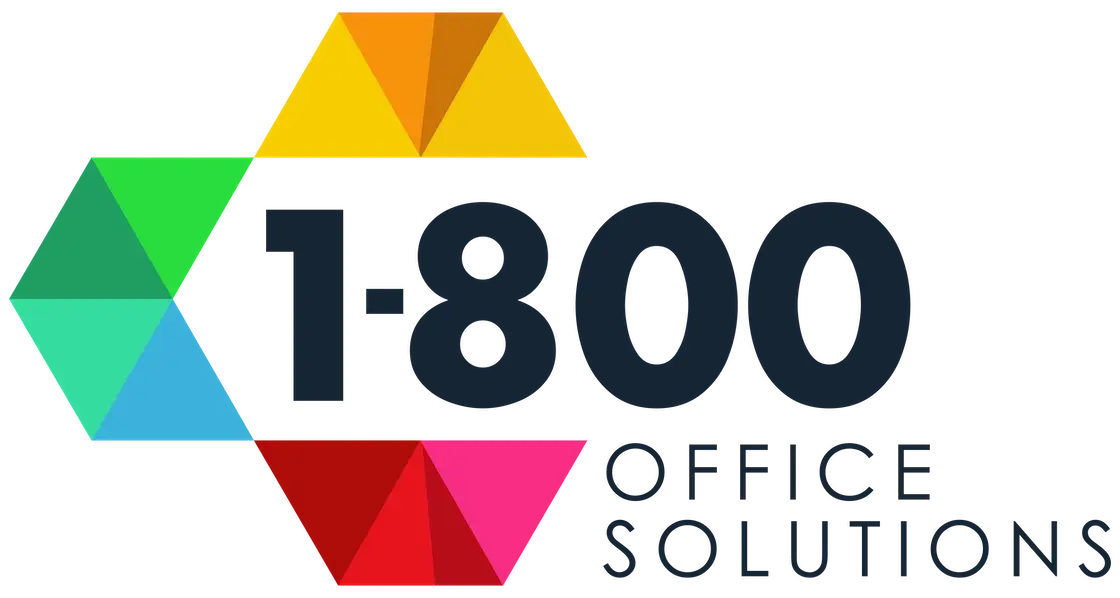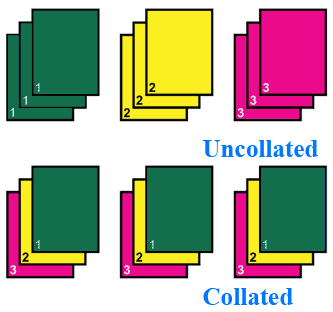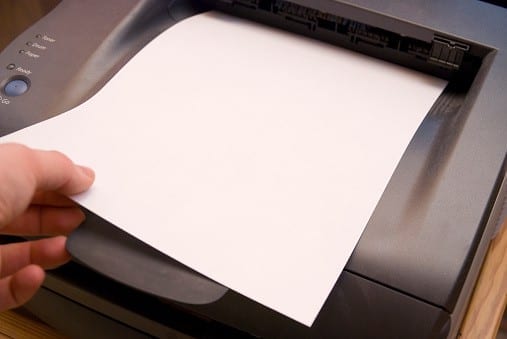Saving Money on Office Printers: The Untapped Strategies You Need to Know
Introduction
In today’s fast-paced business environment, the humble office printer often takes a back seat in the grand scheme of things. Yet, it’s an essential tool that bridges the digital and physical worlds, enabling us to put vital information into tangible form. However, the costs associated with maintaining printers, especially in a large office setting, can quickly add up. From ink cartridges to toner, paper, and even energy consumption, the expenses are far from negligible.
Saving money on office printers is not just about cutting costs. It’s about efficiency, sustainability, and making the most out of every resource. Whether it’s a laser printer in a bustling corporate office or inkjet printers in a home office, the strategies to save can be surprisingly simple yet often overlooked.
Here’s a glance at what can be done:
- Understanding Printer Needs: Not every office requires a high-end laser printer. Sometimes, an inkjet printer will do the job at a fraction of the cost.
- Optimizing Ink and Toner Usage: By subscribing to services like 1800 Office Solutions, you can save significantly on ink cartridges and toner.
- Implementing Efficient Printing Practices: Double-sided printing, draft quality for internal documents, and using refillable ink reservoirs like those found in Epson EcoTank Printers can make a huge difference.
- Monitoring and Controlling: Tools like PrintVisor can help in understanding and controlling printing habits, leading to more informed decisions.
The untapped strategies to save on printer ink and other associated costs are not just about being frugal. They represent a mindset that values resourcefulness, innovation, and a commitment to not only the bottom line but also to environmental stewardship.
Strategies for Saving Money on Office Printers
In this sections, we will guide you strategies, providing actionable insights that can be applied in various settings, from a bustling corporate environment to a small home office. Whether you are using laser printers or inkjet printers, these strategies are tailored to help you make the most of your printing resources, without breaking the bank.
Ink and Toner Management
1. Ink or Toner Subscription Services
One of the innovative ways to save money on printer ink and toner is through subscription services like 1800 Office Solutions. These services offer a convenient way to never run low on ink or toner. They monitor your printing habits and automatically send replacement cartridges when you’re running low. Here’s why this can be beneficial:
- Cost Savings: You pay a flat monthly fee based on the number of pages you print, not the amount of ink you use. This can lead to significant cost savings, especially if you print a lot of color documents.
- Convenience: No need to worry about running out of ink or toner. The service takes care of it, sending you supplies before you run out.
- Flexibility: You can adjust your plan according to your printing needs, ensuring you only pay for what you need.
- Environmental Benefits: Many services include recycling options for your used cartridges, contributing to a greener office environment.
2. Opting for Refillable Ink Printers
Refillable ink reservoirs are becoming increasingly popular as a way to reduce the costs associated with ink costs. Printers like Epson’s EcoTank series come with large ink tanks that you refill with ink bottles. Here’s why this option is worth considering:
- Lower Operating Costs: While the initial cost of the printer may be higher, the cost per page is significantly lower. This can save quite a bit of money in the long term.
- Less Waste: Traditional cartridges can create a lot of waste. Refillable tanks reduce this waste, making them an environmentally friendly option.
- Ease of Use: Refilling the tanks is a simple process, and many printers show the ink levels on the front, so you know exactly when to refill.
- Quality: These printers offer excellent print quality, making them suitable for both home printer and office printer use.
3. Using Proper Ink Cartridges from Reputable Sources
Using proper ink and toner from reputable sources is vital for maintaining the print quality and longevity of your printer. Here’s why:
- Quality Assurance: Genuine or high-quality compatible ink ensures that the print quality is consistent and meets the standards set by the printer manufacturer.
- Avoiding Damage: Low-quality cartridges may leak or cause damage to the printer, leading to higher repair costs.
- Warranty Compliance: Using non-genuine cartridges might void the printer’s warranty, leading to potential issues if repairs are needed.
- Environmental Considerations: Reputable suppliers often have recycling programs for used cartridges, contributing to sustainability efforts.
4. Reconsidering Your Printer Choice
Investing in efficient printers can lead to substantial savings. Here’s how:
- Understanding Needs: Assessing the printing needs of your office environment helps in selecting the right printer. Inkjets might be suitable for low-volume, high-quality prints, while laser printers might be more cost-effective for high-volume printing.
- Total Cost of Ownership: Consider not just the upfront cost but also the ongoing costs like ink and toner, maintenance, and energy consumption.
- Energy Efficiency: Look for energy-efficient models that consume less power.
- Features: Multifunction printers that combine printing, scanning, and copying can save space and money.
- Compatibility: Ensure that the printer supports cost-saving features like duplex printing.
Printing Techniques
1. Double-Sided Printing
Double-sided printing, or duplex printing, is a simple yet effective way to cut paper costs by 50%. Here’s how it works:
- Settings Adjustment: Most modern printers have an option to print on both sides of the paper. This can usually be set as the default in the printer settings.
- Environmental Impact: By using half the paper, you’re not only saving money but also contributing to environmental conservation.
- Professional Appearance: For documents like reports and manuals, double-sided printing offers a professional look.
- Potential Challenges: Some documents may require single-sided printing. Knowing when to use and when to avoid double-sided printing is key.
2. Draft Print Quality
Using draft print quality for non-professional documents is an excellent way to save money on ink. Here’s why:
- Less Ink Usage: Draft mode uses less ink, extending the life of your ink or toner cartridges.
- Faster Printing: Draft quality prints faster, saving time, especially for large print jobs.
- Ideal for Internal Use: For internal documents where high quality is not required, draft mode is perfect.
- Easy to Set: You can set draft mode as the default for specific documents or applications, ensuring that it’s used consistently.
3. Printing Multiple Pages on One Sheet
Printing multiple pages on one sheet is a practical way to reduce paper and ink usage. Here’s how:
- Page Layout Options: Most printer settings allow you to print 2, 4, or more pages on one sheet. This is especially useful for PowerPoint slides or documents where high detail is not required.
- Reduces Paper Usage: This can significantly reduce the amount of paper used, leading to cost savings.
- Ideal for Reviewing: If you need to review a long document, printing multiple pages on one sheet allows for a quick overview.
- Customization: You can usually customize the layout to suit your needs, providing flexibility and control.
4. Black and White Printing
Printing in black and white, when color is unnecessary, can lead to substantial savings. Here’s why:
- Ink Savings: Color ink is often more expensive than black ink. By printing in black and white, you use less of the costly color ink.
- Appropriate Usage: For many documents, color is not required. Knowing when to print in black and when to use color can lead to savings.
- Default Settings: You can set your printer to print in black and white by default, ensuring that color is only used when necessary.
- Professional Appearance: Black and white printing often looks more professional for certain types of documents.
Paper and Print Job Management
1. Reuse Paper for Scrap
Utilizing single-sided prints for scrap paper is a simple yet effective way to reduce costs. Here’s how:
- Reuse Single-Sided Prints: If a document is printed on one side only, the other side can be used for notes, drafts, or internal documents.
- Create a Reuse Bin: Having a designated bin for single-sided prints encourages staff to reuse paper.
- Environmental Benefits: Reusing paper contributes to sustainability efforts within the office.
- Cost Savings: Even small savings on paper can add up over time, contributing to overall cost savings.
2. Print Only What You Need
Printing only what you need is a fundamental principle in managing print costs. Here’s how to implement it:
- Selective Printing: Most print dialogs allow you to select specific pages or sections to print. Use this to avoid printing unnecessary pages.
- Preview Before Printing: Always preview documents before hitting the print button. This helps in avoiding mistakes and unnecessary reprints.
- Educate Staff: Encourage staff to think before they print and to only print what is necessary.
- Digital Alternatives: Consider whether a digital copy would suffice instead of a printed one.
3. Assess Paper Use and Capture Details on Printing Habits
Understanding office printing habits is key to implementing cost-saving measures. Here’s how:
- Monitoring Software: Tools like Print Visor provide insights into who is printing what, when, and how often.
- Regular Assessments: Regularly assessing print usage helps in identifying wasteful practices and opportunities to save.
- Tailored Solutions: By understanding the specific printing habits of your office, you can implement solutions that are tailored to your needs.
- Encourage Responsible Printing: Sharing insights with staff can encourage responsible printing and contribute to a culture of efficiency.
4. Monitor & Control Paper Consumption
Using software to monitor and control paper consumption is an advanced way to manage print costs. Here’s how:
- Software Solutions: Tools like Print Visor can provide real-time insights into paper consumption.
- Set Limits: Some software allows you to set limits on printing, ensuring that resources are used responsibly.
- Reporting: Regular reports can highlight trends and areas for improvement.
- Integration with Policies: Monitoring can be part of a broader paper-saving policy, reinforcing other measures and ensuring that they are followed.
Implementing a Paper-Saving Policy
1. Announcing and Enforcing a Policy
Creating a “think before you print” mentality starts with a clear policy. Here’s how to implement it:
- Clear Guidelines: Outline what is expected regarding printing. This might include defaulting to double-sided printing, using draft mode for internal documents, etc.
- Communication: Regularly communicate the policy to ensure that it’s followed.
- Enforcement: Consider implementing measures to enforce the policy, such as monitoring or restrictions on printing.
- Incentives: Some companies offer incentives for departments that reduce printing, encouraging compliance.
2. Going Paperless and Encouraging Electronic Workflow
Going paperless and encouraging an electronic workflow can lead to significant savings. Here’s how:
- Digital Tools: Utilize digital tools for collaboration and document sharing, reducing the need to print.
- Training: Provide training on how to use digital tools effectively.
- Benefits: Going paperless not only saves money but also enhances collaboration and document accessibility.
- Challenges: Recognize that some tasks may still require printing and find balanced solutions.
3. Using Duplex Mode and Playing with Document Settings
Utilizing duplex printing and adjusting document settings can lead to savings. Here’s how:
- Default to Duplex: Set duplex printing as the default where appropriate.
- Margins and Fonts: Reducing margins and using eco-friendly fonts can save ink and paper.
- Templates: Create templates with optimized settings for common document types.
- Education: Teach staff how to adjust settings to suit their needs, encouraging responsible printing.
4. Implementing a Printer and Copy Machine Control System
Badge-activated printing is an advanced control system that can lead to savings. Here’s how:
- Security: Badge-activated printing ensures that documents are only printed when the authorized user is present, reducing unnecessary printing.
- Control: This system allows for detailed control over who can print what, allowing for tailored solutions.
- Reduces Waste: If a print job is sent but never collected, it won’t be printed, reducing waste.
- Integration: This can be integrated with other measures, such as monitoring and paper-saving policies, for a comprehensive solution.
Additional Tips
More Tips to Reduce Paper Wastage
Here’s a summary of additional tips that can help in reducing paper wastage and saving money:
- Eco-Friendly Fonts: Some fonts use less ink. Consider using them for internal documents.
- Personal Printing Footprints: Encourage staff to track their personal printing footprints and set goals to reduce them.
- Print Preview: Always use print preview to avoid mistakes and unnecessary reprints.
- Use Bookmarks: Instead of printing web pages, bookmark them for later reference.
- Consider Wide-Format Printing: For large documents, wide-format printing might be more efficient.
- Use Compatible Ink: High-quality compatible ink can offer savings without compromising quality.
- Consider New Office Printers: Sometimes, investing in a new printer with modern features can lead to long-term savings.
- Understand Page Yield: Knowing the page yield of your ink or toner helps in understanding the true cost and selecting the best options.
- Utilize Print-Friendly Features on Websites: Many websites offer print-friendly versions of pages. Utilize these to save ink and paper.
- Educate and Encourage: Regularly educate and encourage staff to think about their printing habits and to implement these tips and tricks.
By implementing these strategies, an office can significantly reduce the cost of printing and contribute to a more efficient and environmentally friendly print environment. Whether it’s a home printer or a bustling office, these strategies are tailored to meet various needs and can lead to substantial savings money on office printers.
What People Also Ask
What are the average costs of printing in an office?
The average costs of printing in an office can vary widely based on factors such as the types of printers used, the volume of printing, the cost of ink or toner, and the quality of paper. For a typical office using laser printers, the cost per page might range from 2 to 5 cents for black and white and 8 to 20 cents for color. These costs can quickly add up, especially in a high-volume print environment. Other factors like maintenance, energy consumption, and printer supplies also contribute to the overall cost.
How can I monitor the printing habits in my office?
Monitoring the printing habits in your office can be achieved through specialized print management software like PrintVisor. These tools provide insights into who is printing what, when, and how often. They can generate reports that highlight trends and areas for improvement, allowing you to implement tailored solutions that meet your office's specific needs. By understanding the specific printing habits of your office, you can encourage responsible printing and create a culture of efficiency, ultimately leading to cost savings.
What are the benefits of going paperless?
Going paperless offers several benefits, both in terms of cost savings and efficiency. By reducing the need to print, you save money on paper, ink, and toner, as well as on the maintenance of printers. A paperless environment also enhances collaboration and document accessibility, as digital files can be easily shared and accessed from anywhere. It contributes to sustainability efforts by reducing paper waste. Additionally, digital files are often easier to organize and search, leading to increased productivity and streamlined workflows.
How can I enforce a paper-saving policy in my office?
Enforcing a paper-saving policy in your office starts with clear communication and guidelines. Outline what is expected regarding printing, such as defaulting to double-sided printing or using draft mode for internal documents. Regularly communicate the policy to ensure that it's followed, and consider implementing measures to enforce it, such as monitoring or restrictions on printing.
Some companies also offer incentives for departments that reduce printing. Integrating the policy with other measures, such as monitoring and badge-activated printing, can create a comprehensive solution that encourages compliance and leads to significant savings.
Conclusion
In the bustling environment of today’s offices, the cost of printing can quickly add up, often unnoticed. However, as we’ve explored, there are numerous untapped strategies that can lead to significant savings. From ink and toner management through subscription services and refillable ink reservoirs to implementing efficient printing techniques like double-sided printing and draft print quality, the opportunities to save are abundant.
Paper and print job management, along with implementing a paper-saving policy, can further streamline the print environment, reducing costs and contributing to sustainability. Even small changes, like reusing paper for scrap or printing only what you need, can make a difference.
The journey to a more efficient and cost-effective print environment begins with awareness and a willingness to explore these strategies. Whether it’s a home office or a large corporate setting, these methods are adaptable and can lead to substantial savings in both money and resources.
By embracing these untapped strategies, you’re not only taking steps to reduce costs but also contributing to a more sustainable and efficient office environment. The benefits are clear, and the potential savings are significant. It’s time to take control of your printing costs and implement these valuable strategies.












